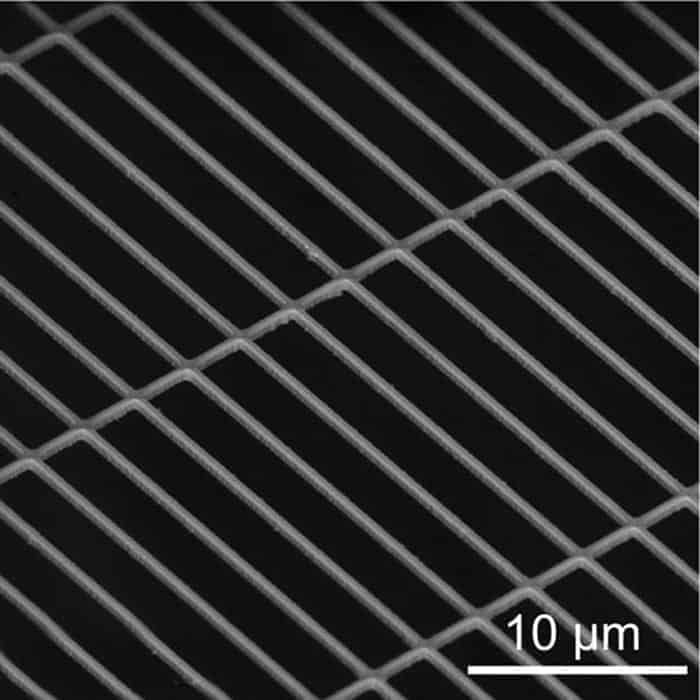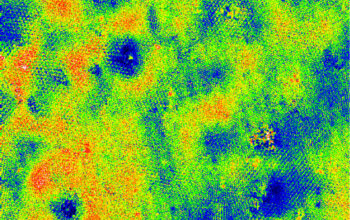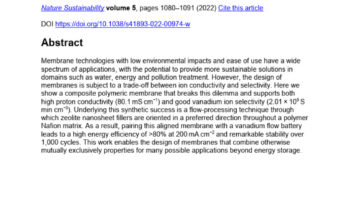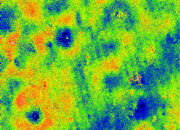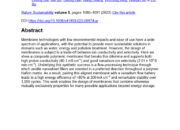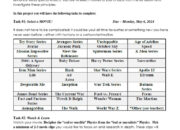The advent of nanostructured materials has ushered in an era of unprecedented possibilities across diverse fields, particularly in photonics and optics. The Gossamer “nanoweb,” a novel innovation, exemplifies this transformation by presenting a lightweight, pliable structure capable of blocking light efficiently. This extraordinary capability raises intriguing questions and challenges regarding its potential applications and implications. What might be the practical uses of such a material in everyday life? Furthermore, could there be unanticipated consequences that arise from its implementation?
The foundational principle behind the Gossamer nanoweb lies in its structural composition, which is primarily derived from intricately arranged nanoscale fibers. These fibers, often made from polymers or metals, are woven together to form a minimalistic web-like architecture. The name “gossamer” aptly describes this material; it is delicate and ethereal, yet possesses remarkable strength and resilience when properly engineered. This harmonious balance between fragility and robustness is pivotal in its performance, as it allows the nanoweb to display superior light-blocking capabilities while maintaining a weight that is virtually negligible.
At a microscopic level, when light interacts with the Gossamer nanoweb, it encounters countless surface irregularities and interfaces that result in scattering and absorption. This phenomenon leads to effective attenuation of light, which means that, to varying extents, the material can hinder the transmission of photons. Exploring the degree of attenuation is critical for applications such as optical filters, solar energy devices, and even enhanced camouflage technologies. Yet, one must ponder the specific implications of deploying such a material: while it serves to block light, what impact does that have on the surrounding environmental conditions or biological systems?
Applications of the Gossamer nanoweb are manifold. In the realm of solar energy, for instance, the integration of this material could optimize the efficiency of photovoltaic cells by minimizing reflective losses. By blocking unwanted wavelengths while allowing desired frequencies to penetrate, the nanoweb could significantly augment the energy conversion efficiency of solar panels. Additionally, in the field of telecommunications, these nanowebs could be employed in optical networks to modulate light paths and enhance signal fidelity. However, herein lies a genuine challenge: how do we effectively scale production without compromising quality?
As with any emerging technology, the scalability of Gossamer nanoweb production poses a dual challenge: it is not solely about increasing manufacture rates but also ensuring consistency and reliability in the material’s properties across vast quantities. The synthesis of nanostructured materials often involves sophisticated processes such as electrospinning or chemical vapor deposition, which can be costly and time-consuming. Therefore, the pursuit of a cost-effective and efficient method for mass-producing nanowebs remains a significant hurdle. This situation begs the question: will industry stakeholders prioritize scalability at the expense of performance, or can equilibrium be achieved that satisfies both criteria?
Moreover, the environmental impact of Gossamer nanowebs cannot be overlooked. As demand for these materials escalates in numerous industries, one must ask how the production lifecycle may affect our ecosystems. The polymers used may be non-biodegradable, potentially leading to long-lasting waste if not handled responsibly. How can industry practices evolve to mitigate ecological repercussions? The implementation of circular economy principles in manufacturing could provide a viable solution, allowing for recycling and re-use of materials to minimize waste and environmental degradation.
Culturally, the introduction of Gossamer nanoweb technology challenges our perception of material utility. Traditionally, materials characterized by low density and high translucency have been perceived as less functional. The Gossamer nanoweb, however, subverts this notion by leveraging its unique properties to create functional yet lightweight material systems. Thus, it poses an intriguing query for designers and engineers alike: how can aesthetic and functional values be harmoniously integrated in future applications? This philosophical contemplation may hold profound implications for the evolution of material science.
Yet, despite its advances and potential, the Gossamer nanoweb must be approached with circumspection. Technological innovations often carry unforeseen consequences, particularly when they alter the dynamics of natural systems. As this material is further explored and commercialized, rigorous observational studies will be essential to monitor any anthropogenic effects. Could the sheer proliferation of light-blocking nanowebs inadvertently disrupt local ecologies, such as by affecting photosynthetic processes in flora? These are critical considerations for researchers and regulatory bodies alike, as they endeavor to balance innovation with responsibility.
In summation, the Gossamer nanoweb represents a remarkable innovation that combines the realms of light management and nanotechnology. It is multifaceted, offering significant advantages across various sectors, including renewable energy and telecommunications, while simultaneously confronting challenges related to scalability, environmental sustainability, and socio-cultural perceptions. As societal dependence on advanced materials expands, the quest remains: how do we harness the remarkable capabilities of such technologies while safeguarding our planet and addressing the ethical dilemmas that invariably arise? The discourse surrounding the Gossamer nanoweb will undoubtedly evolve, as it reflects both the ingenuity and the responsibilities that accompany scientific advancement.
